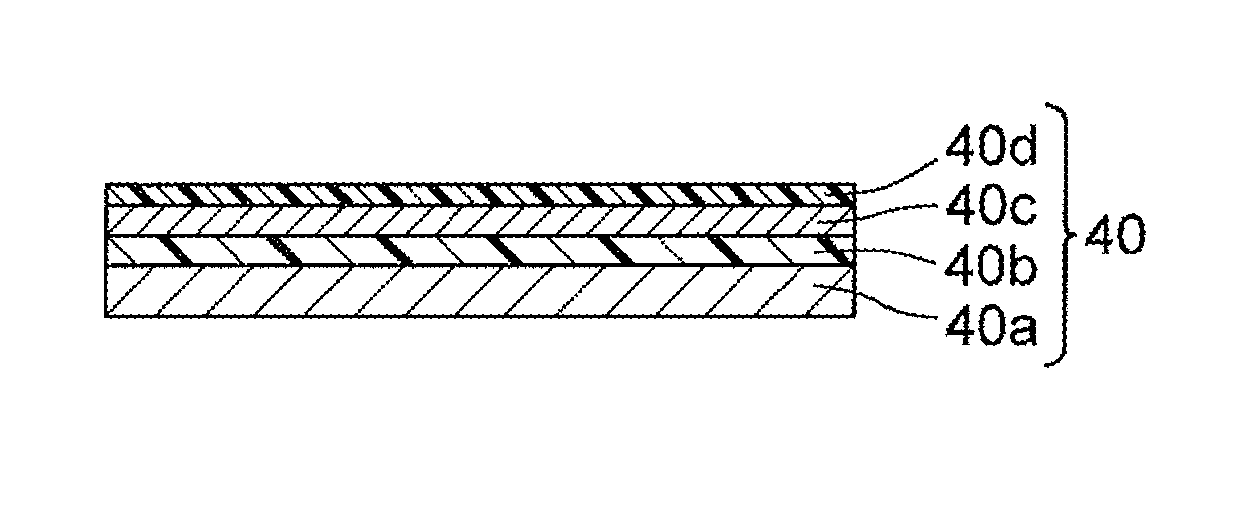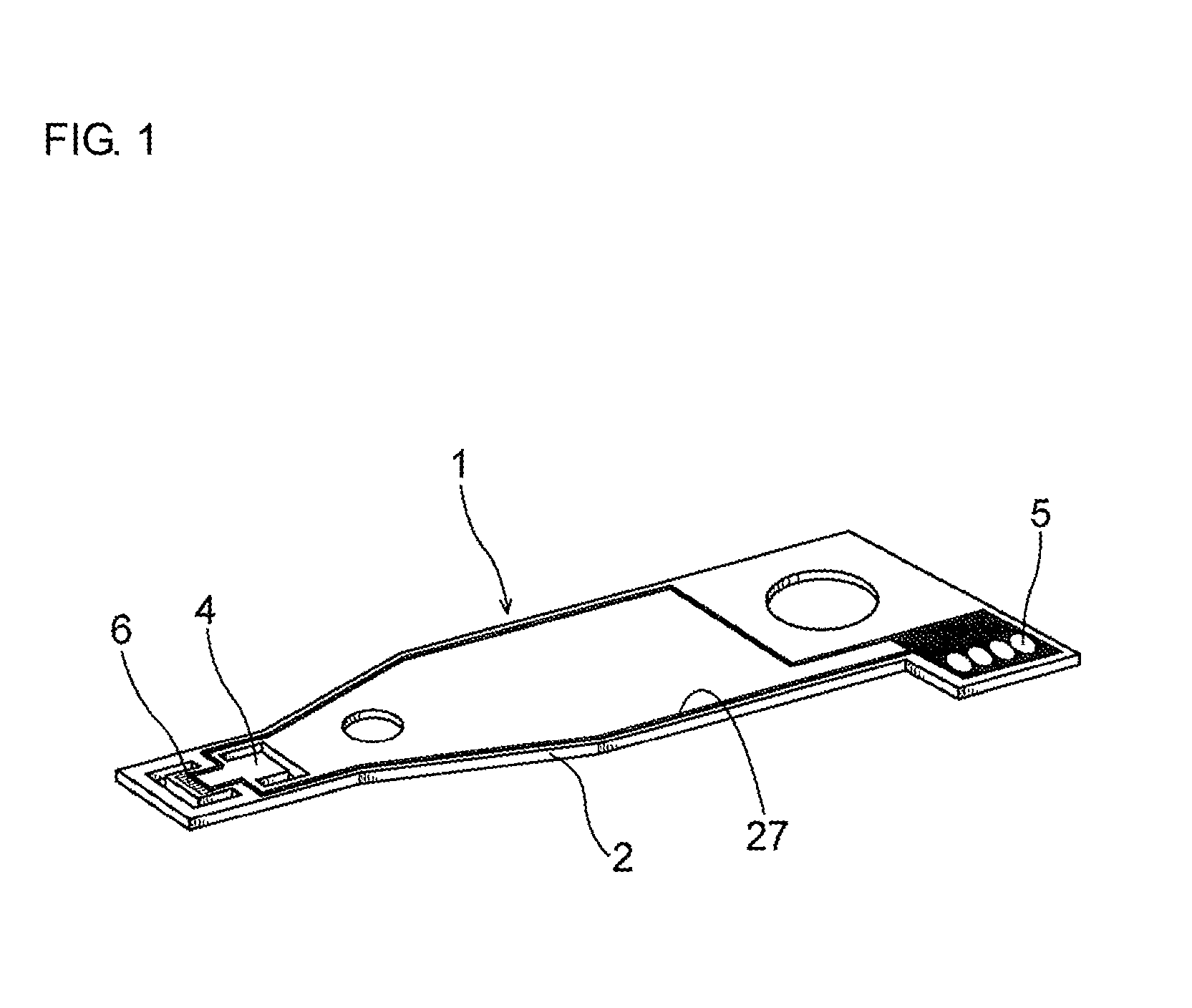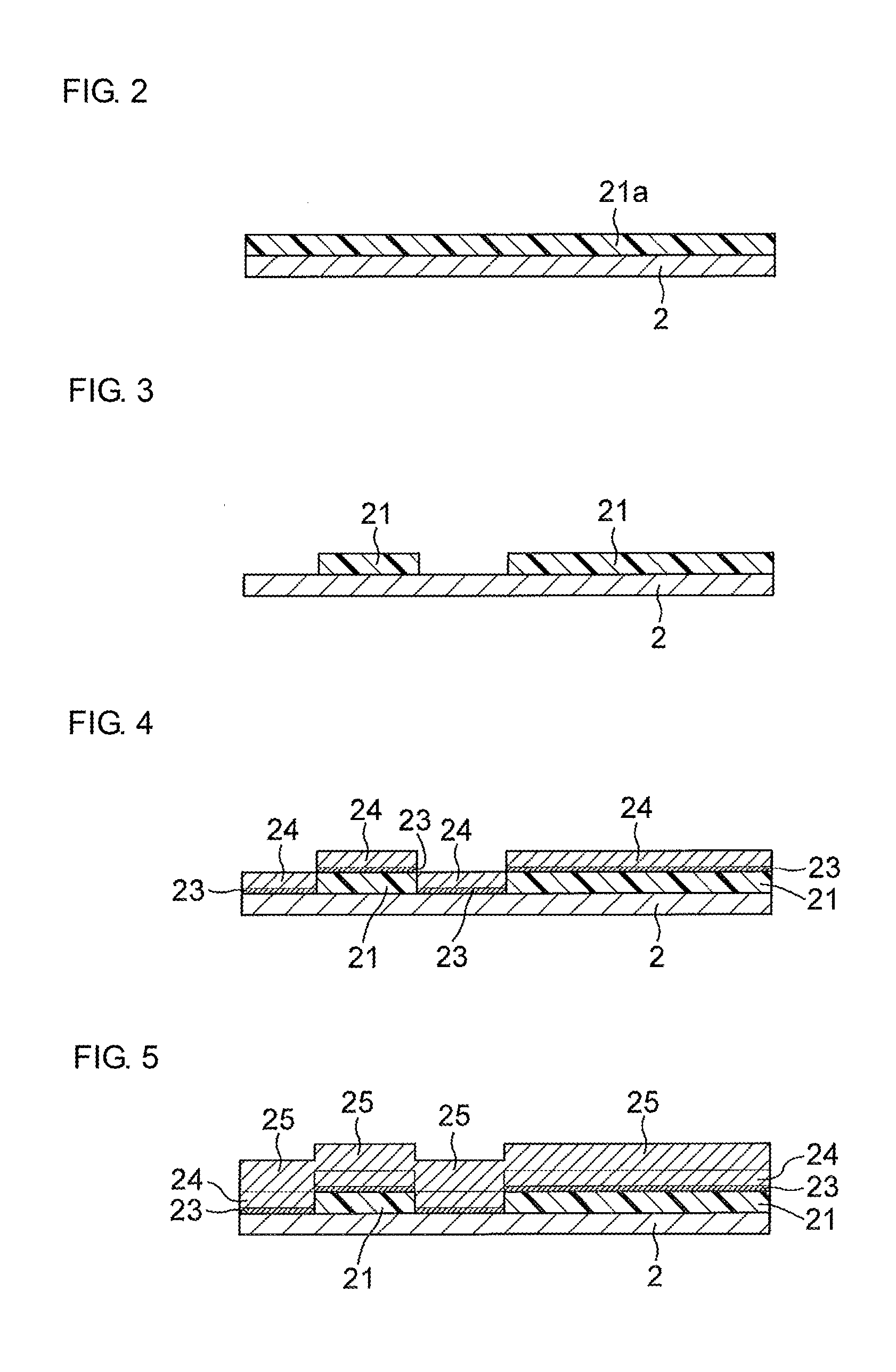Photosensitive resin composition and circuit board with metal support using the same
a technology of resin composition and circuit board, which is applied in the direction of photosensitive materials, integrated arm assemblies, instruments, etc., can solve the problems of large curing shrinkage, difficult to use photo acid generators in some applications, and inhibit the cure of oxygen in the air, etc., and achieves excellent reliability, small curing shrinkage, and satisfactory photosensitivity.
- Summary
- Abstract
- Description
- Claims
- Application Information
AI Technical Summary
Benefits of technology
Problems solved by technology
Method used
Image
Examples
examples
[0128]Next, examples are described together with comparative examples. It should be noted that the present invention is by no means limited to these examples.
(1) Preparation of Carboxyl Group-Containing Linear Polymer x1
[0129]10 g of methacrylic acid, 60 g of butyl acrylate, 30 g of methyl methacrylate, 100 g of propylene glycol monomethyl ether acetate, and 1.0 g of azobisisobutyronitrile were loaded into a 300 mL separable flask under a nitrogen atmosphere, heated with stirring, and subjected to a reaction at 90° C. for 5 hours to afford a carboxyl group-containing linear polymer solution (solids content: 50% by weight) (calculated value for carboxylic acid equivalent of carboxyl group-containing linear polymer: 860, weight average molecular weight: 34,000).
(2) Preparation of Carboxyl Group-Containing Linear Polymer x2
[0130]10 g of methacrylic acid, 90 g of phenoxyethyl acrylate, 100 g of propylene glycol monomethyl ether acetate, and 1.0 g of azobisisobutyronitrile were loaded in...
example 8
[0139]The photosensitive resin composition solution prepared in Example 1 above was applied onto a stainless-steel (SUS304) foil having a thickness of 18 μm and then dried with heating at 100° C. for 2 minutes to form a coating film of a photosensitive resin composition. Next, the resultant was irradiated with ultraviolet rays via a photomask at an exposure dose of 200 mJ / cm2, heated at 110° C. for 3 minutes, and then subjected to development with a 1% sodium carbonate aqueous solution at 30° C. for 2 minutes to form a negative type image. At this time, the thicknesses of the coating film of the photosensitive resin composition before and after the developing treatment were measured with a micrometer, and a residual film rate (%) of the coating film was determined from the expression: (thickness after development / thickness before development) x100.
[0140]Next, a patterned undercoat insulating layer (base insulating layer: thickness 10 μm) was formed by heating at 200° C. for 60 minut...
example 9
[0148]A suspension board with circuit for evaluation having a size of 5×30 mm was produced in the same manner as in Example 8 except that the photosensitive resin composition prepared in Example 2 above was used.
PUM
 Login to View More
Login to View More Abstract
Description
Claims
Application Information
 Login to View More
Login to View More - R&D
- Intellectual Property
- Life Sciences
- Materials
- Tech Scout
- Unparalleled Data Quality
- Higher Quality Content
- 60% Fewer Hallucinations
Browse by: Latest US Patents, China's latest patents, Technical Efficacy Thesaurus, Application Domain, Technology Topic, Popular Technical Reports.
© 2025 PatSnap. All rights reserved.Legal|Privacy policy|Modern Slavery Act Transparency Statement|Sitemap|About US| Contact US: help@patsnap.com



